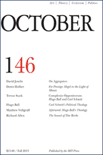
OCTOBER
Scope & Guideline
Pioneering Scholarly Exploration in Contemporary Humanities
Introduction
Aims and Scopes
- Art and Politics:
The journal consistently examines the relationship between art and political movements, exploring how artistic expression can reflect and influence societal change. - Cultural Theory and Critique:
OCTOBER focuses on theoretical frameworks that critique cultural phenomena, often drawing on philosophical perspectives to analyze contemporary art and its historical precedents. - Interdisciplinary Approaches:
The journal promotes interdisciplinary research, integrating insights from various fields such as sociology, history, and media studies to enrich discussions around art and culture. - Art Practices and Methods:
A significant emphasis is placed on the methodologies of art production, including the role of technology and collaboration in contemporary art practices. - Historical Contextualization:
OCTOBER often contextualizes contemporary art within historical narratives, linking past movements and figures to current artistic trends and debates.
Trending and Emerging
- AI and Art:
The exploration of artificial intelligence's impact on art production and theory is gaining traction, indicating a growing interest in how technology reshapes creative practices and cultural discourse. - Intersectionality in Art:
There is an increasing focus on intersectional approaches that analyze how race, gender, and class intersect within artistic practices, reflecting broader societal discussions. - Global Modernism:
Emerging discussions around global modernism highlight the need to consider diverse cultural perspectives and histories in understanding contemporary art movements. - Art and Activism:
The journal is witnessing a rise in articles that explore the role of art as a form of activism, particularly in response to global crises such as climate change and social justice movements. - Transnational Perspectives:
Papers that examine transnational influences in art are becoming more prevalent, showcasing how global connections inform local practices and vice versa.
Declining or Waning
- Traditional Art Historical Narratives:
There is a noticeable decrease in papers strictly adhering to conventional art historical discourse, as the journal shifts towards more contemporary and avant-garde approaches. - Purely Aesthetic Evaluations:
The journal has moved away from articles that solely focus on aesthetic critiques of artworks, favoring analyses that incorporate socio-political and theoretical dimensions. - Regional Art Focus:
Themes centered on specific regional art practices, particularly those less engaged with global dialogues, appear to be declining as the journal prioritizes broader, more inclusive discussions. - Static Interpretations of Art:
Papers that offer fixed interpretations of artworks without considering evolving contexts or contemporary implications are becoming less frequent, reflecting a shift towards dynamic and fluid analyses.
Similar Journals

GOYA
Bridging Artistic Practices and Societal ImpactGOYA, published by the esteemed FUNDACION LAZARO GALDIANO, is a pivotal journal in the field of Visual Arts and Performing Arts. With an ISSN of 0017-2715, this Spanish journal serves as a critical platform for scholars, artists, and practitioners to engage with contemporary issues, trends, and methodologies in the arts. Since its inception, GOYA has strived to illuminate the intersection of artistic expression and cultural discourse, with coverage spanning from 2002 to 2024. The journal proudly holds a Q3 category ranking in the 2023 Scopus assessments for its field, reflecting its respected position among peers, with a notable rank of #377 out of 667. Though it does not follow an Open Access model, GOYA continues to contribute significantly to the academic landscape, enabling a deeper understanding of artistic practices and their societal implications. Researchers and students alike will find the journal an invaluable resource for insights and inspiration within the dynamic realm of the arts.
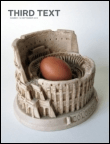
Third Text
Illuminating contemporary discourse in cultural studies.Third Text is a premier academic journal dedicated to the critical engagement with cultural and artistic practices, serving as a vital platform for scholars and practitioners in the fields of Cultural Studies and Visual Arts and Performing Arts. Published by Routledge Journals, Taylor & Francis Ltd in the United Kingdom, this journal has steadily established itself as a leader in its field since its inception in 1987. With an impressive Q2 ranking in both categories as of 2023, Third Text is noted for its rigorous peer-reviewed research and thought-provoking analysis, contributing significantly to contemporary discourse in the arts. While the journal maintains a traditional publication model, it offers a rich array of scholarly articles aimed at fostering dialogue and innovation among researchers, professionals, and students alike. Researchers looking to explore intricate cultural dynamics and the intersections of art, society, and politics will find Third Text an indispensable resource in their academic journey.

Baltic Journal of Art History
Engaging Minds with Pioneering Art Historical ResearchBaltic Journal of Art History is a prominent academic journal published by UNIV TARTU PRESS, focusing on the rich tapestry of art historical research within the Baltic region and beyond. With its ISSN 1736-8812 and E-ISSN 2346-5581, the journal serves as a vital platform for scholars, artists, and historians to disseminate innovative findings and critical analyses in the fields of History and Visual Arts and Performing Arts. Established in 2017, it has gained recognition in academic circles, achieving a Q3 ranking in History and a Q2 ranking in Visual Arts and Performing Arts as of 2023. Despite not being open access, the journal continues to attract a diverse readership eager to engage with its rigorous, peer-reviewed content. Situated in Estonia, the journal not only enriches the regional scholarly discourse but also contributes significantly to global conversations on art history. Positioned at a pivotal intersection of various disciplines, the Baltic Journal of Art History invites researchers and practitioners alike to explore the aesthetic and cultural narratives that shape our understanding of art.
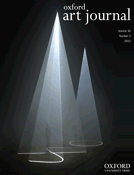
OXFORD ART JOURNAL
Connecting Scholars to the World of ArtOxford Art Journal, published by Oxford University Press, serves as a vital platform for scholarly discourse in the fields of History, Visual Arts, and Performing Arts. With an ISSN of 0142-6540 and an E-ISSN of 1741-7287, this esteemed journal has cultivated a rich academic presence since its inception, reflecting a deep commitment to exploring the intricacies of art history and contemporary visual culture. Holding a Q2 ranking in Visual Arts and Performing Arts and a Q3 ranking in History for the year 2023, the journal features rigorous peer-reviewed articles that push the boundaries of research and offer new insights into artistic practices. Although not offering open access, the journal is widely respected for its contributions to the academic community, making it invaluable for researchers, professionals, and students deeply engaged in art studies. For those seeking a comprehensive understanding of the visual arts landscape, the Oxford Art Journal remains an indispensable resource.

SituArte
Cultivating a Dialogue Between Art and SocietySituArte is an esteemed academic journal published by UNIV ZULIA-VENEZUELA, focusing on the interdisciplinary fields of art, culture, and social sciences, particularly within the Latin American context. With its ISSN 1856-7134 and E-ISSN 2542-3231, SituArte endeavors to foster critical discourse and promote innovative research that explores the dynamic interplay between visual culture and societal impacts. Although this journal does not currently offer open access options, it remains a vital resource for researchers, professionals, and students seeking to contribute to the evolving conversations in these disciplines. Situated in Maracaibo, Venezuela, SituArte emphasizes regional perspectives while engaging with global trends, making it an essential platform for disseminating scholarly work that challenges conventional paradigms and enriches the academic community.
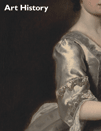
ART HISTORY
Fostering Insightful Discourse in Visual and Performing ArtsART HISTORY is a prestigious journal published by Wiley, focusing on the dynamic and diverse field of visual arts and performing arts since its inception in 1978. With an ISSN of 0141-6790 and an E-ISSN of 1467-8365, the journal has established itself as a significant resource for researchers, professionals, and students interested in exploring the complexities of art across various epochs and cultures. Currently ranked in the Q3 category within the Visual Arts and Performing Arts sector and positioned at #132 out of 667 in Scopus rankings—representing the top 80th percentile—ART HISTORY delivers insightful scholarship that contributes to the understanding and appreciation of art history. Although it does not offer open access, the journal remains committed to publishing high-quality, peer-reviewed articles that delve into critical artistic practices, theories, and aesthetics. The journal's location in the United Kingdom further enhances its international reach and influence, making it a vital platform for advancing discourse in the arts.

Experiment-A Journal of Russian Culture
Fostering Dialogue on Russia's Cultural IdentityExperiment-A Journal of Russian Culture is a distinctive publication dedicated to exploring the multifaceted dimensions of Russian culture, encompassing literature, art, and social history. Published by BRILL, a respected name in academic publishing, this journal provides a platform for original research and insightful discourse, fostering a deeper understanding of Russia's rich cultural heritage. With an ISSN of 1084-4945 and an E-ISSN of 2211-730X, the journal is organized in a quarterly format, although it has seen varied publication years from 1996 through 2023. While it currently holds a Q4 ranking in both Cultural Studies and Visual Arts and Performing Arts, its commitment to interdisciplinary inquiry makes it a vital resource for researchers, professionals, and students interested in contemporary and historical Russian cultural phenomena. Despite its modest impact factors, the journal remains an essential platform for the dissemination of critical perspectives and theoretical frameworks, contributing to the ongoing dialogue about Russian identity and its artistic representations. The journal is available in print and may have limited digital access options, making it all the more precious for collectors and libraries committed to cultural studies.

Taida Journal of Art History
Decoding the evolution of artistic expression in Taiwan.Taida Journal of Art History, published by NATIONAL TAIWAN UNIVERSITY, GRADUATE INSTITUTE OF ART, is a pioneering academic journal dedicated to the exploration and critique of art history, particularly within the unique cultural context of Taiwan. Since its inception in 2018, the journal has become an important platform for scholarly discourse, offering insights into the evolution of visual arts and performing arts, alongside comprehensive studies in history. With an ISSN of 1023-2095, it currently ranks within the Q4 category in Arts and Humanities (Miscellaneous) and the Q3 category in History and Visual Arts and Performing Arts, indicating its growing influence in these fields. Researchers, professionals, and students alike can benefit from its rigorous peer-reviewed articles that bridge theoretical frameworks with practical applications, making it an essential resource for those engaged in the arts and humanities. This commitment to fostering academic excellence is reflected in its Scopus rankings, where it stands at Rank #338/667 in Visual Arts and Performing Arts and Rank #1027/1760 in History. Engage with the Taida Journal of Art History to gain deeper insights into the evolving narratives of artistic expression.
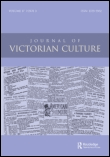
Journal of Victorian Culture
Illuminating the Cultural Depths of the 19th CenturyThe Journal of Victorian Culture, published by Oxford University Press, is an esteemed academic journal that explores the multifaceted cultural landscape of the Victorian era. With a publication history spanning from 1996 to 2024, this journal serves as a critical platform for scholars and practitioners in the fields of Cultural Studies, History, Literature and Literary Theory, and Visual Arts and Performing Arts. It currently holds notable rankings, including Q3 in Cultural Studies and History, and Q2 in Literature, making it a prominent resource in these disciplines. Targeted at an audience that includes dedicated researchers, professionals, and students, the journal promotes interdisciplinary exploration and innovation, encouraging contributors to engage deeply with Victorian themes and their influence on contemporary culture. For those interested in cutting-edge discussions and insights, the Journal of Victorian Culture provides access to rich, scholarly content that is indispensable for understanding the era's impact on modern artistic and social paradigms.

REVUE DE L ART
Unveiling Innovative Perspectives on Artistic PracticesREVUE DE L'ART, published by EDITIONS C N R S, is a significant scholarly journal that focuses on the diverse realms of visual arts and performing arts. With an ISSN of 0035-1326, the journal serves as a vital forum for researchers, professionals, and students, engaging them in contemporary discourses surrounding artistic practices and critical theories. While it currently holds a Q4 ranking in the Visual Arts and Performing Arts category for 2023, with a Scopus ranking of #578 out of 667, REVUE DE L'ART emphasizes the importance of innovative research and interdisciplinary studies in the arts. Although it is not an open access publication, the journal ensures that high-quality scholarship remains accessible to professionals and student communities in France and beyond. The journal’s commitment to artistic investigation and analysis continues to contribute significantly to the understanding of art within historical and contemporary contexts, making it a crucial resource for anyone engaged in these fields.